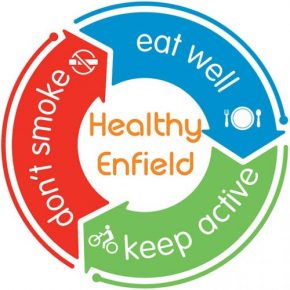Vaping
Vapes, or e-cigarettes, are devices that enable users to inhale nicotine in vapour, generated by heating a liquid (e-liquid), rather than smoke. In the UK it is illegal to sell vapes to under 18s, however, data shows that the number of children and young people using vapes is rising.
Number of children vaping
- In March/April 2023 the proportion of children experimenting with vaping had grown by 50% year on year, from one in thirteen to one in nine.
- In 2023 20.5% of children had tried vaping, up from 15.8% in 2022 and 13.9% in 2020 before the first COVID lockdown. The majority had only vaped once or twice (11.6%), while 7.6% were currently vaping (3.9% less than once a week, 3.6% more than once a week) and the remainder (1.3% in 2023) saying they no longer vape.
- There is an age gradient both for ‘ever’ and ‘current’ vaping. Among 11-15 year olds 15% have ever tried vaping, compared to 34% of 16-17 year olds and 38% of 18 year olds. The figures for current use are 4.6% among those aged 11-15, 15% for 16-17 and 18% for 18-year-olds
- The most frequent source of vapes is shops (48%), closely followed by given (46%) and informal purchase (26%). Multiple options were allowed, and fewer than one in ten (7.6%) gave the internet as a source.
Laws around children vaping
- In 2015, it became illegal to sell vapes containing nicotine to under 18s or to purchase them on their behalf.
- Although selling vapes to children is illegal, giving them out for free is not, and it is of concern that 2.1% of children who have ever tried vaping, report that their first vape was given them by an e-cigarette company.
- Advertising or promotion of vapes and re-fill containers on a number of media platforms is prohibited, as regulated under the EU Tobacco Products Directive (TPD). The only advertising still allowed is at point of sale and other local advertising.
- Vapes are a relatively new product; they aren’t risk free and their long-term impacts are not known.
- The harms of tobacco smoking are known: tobacco has led to millions of deaths and is a significant cause of morbidity. The harms of vaping are, as yet, not fully established but there are concerns regarding acute toxicity, especially when misused, and risks of adverse health outcomes including addiction.
- Exposure to second-hand tobacco smoke has well-established negative health consequences, including for children. The harms of second-hand vaping are not yet conclusive.
- There is growing evidence that vapes are becoming a gateway product to nicotine addiction amongst young people and that young non-smokers who use vapes are more likely than non-users to take up smoking.
- It is illegal to sell cigarettes or nicotine containing vapes to under-18s, but it is not illegal to smoke or vape underage and punishment should be proportionate.
- Children should not be excluded from school for vaping or smoking, unless it is associated with other disruptive behaviour which justifies this.
- The main source of supply to children of cigarettes and vapes is shops. Children under 18 should be asked where they got their vape (or cigarette) from
- Complaints can be made to trading standards through the Citizens Advice online portal.
- Teachers should be aware that vapes could be used to exploit the most vulnerable children, as is the case with other age restricted products such as tobacco and alcohol.
Harms of vaping
- Vapes are a relatively new product; they aren’t risk free and their long-term impacts are not known.
- The harms of tobacco smoking are known: tobacco has led to millions of deaths and is a significant cause of morbidity. The harms of vaping are, as yet, not fully established but there are concerns regarding acute toxicity, especially when misused, and risks of adverse health outcomes including addiction.
- Exposure to second-hand tobacco smoke has well-established negative health consequences, including for children. The harms of second-hand vaping are not yet conclusive.
- There is growing evidence that vapes are becoming a gateway product to nicotine addiction amongst young people and that young non-smokers who use vapes are more likely than non-users to take up smoking.
Guidance on managing vaping in schools
- It is illegal to sell cigarettes or nicotine containing vapes to under-18s, but it is not illegal to smoke or vape underage and punishment should be proportionate.
- Children should not be excluded from school for vaping or smoking, unless it is associated with other disruptive behaviour which justifies this.
- The main source of supply to children of cigarettes and vapes is shops. Children under 18 should be asked where they got their vape (or cigarette) from
- Complaints can be made to trading standards through the Citizens Advice online portal.
- Teachers should be aware that vapes could be used to exploit the most vulnerable children, as is the case with other age restricted products such as tobacco and alcohol.
Resources
Sheffield city council recently developed a comprehensive set of resources for schools to use:
- Posters for display in school toilets, classrooms, canteens, and noticeboards
- A short, animated film to start discussions in PSHE lessons, form times and assemblies. Animation also available on YouTube: https://youtu.be/rod4d4yFeaE.
- Classroom presentation for use by teachers alongside the animated film. Notes pages here.
- Teachers Toolkit with more detail to back up the classroom presentation
- Electronic leaflet for parents and carers to share via newsletters or emails etc. Version with pages as spreads available here.
